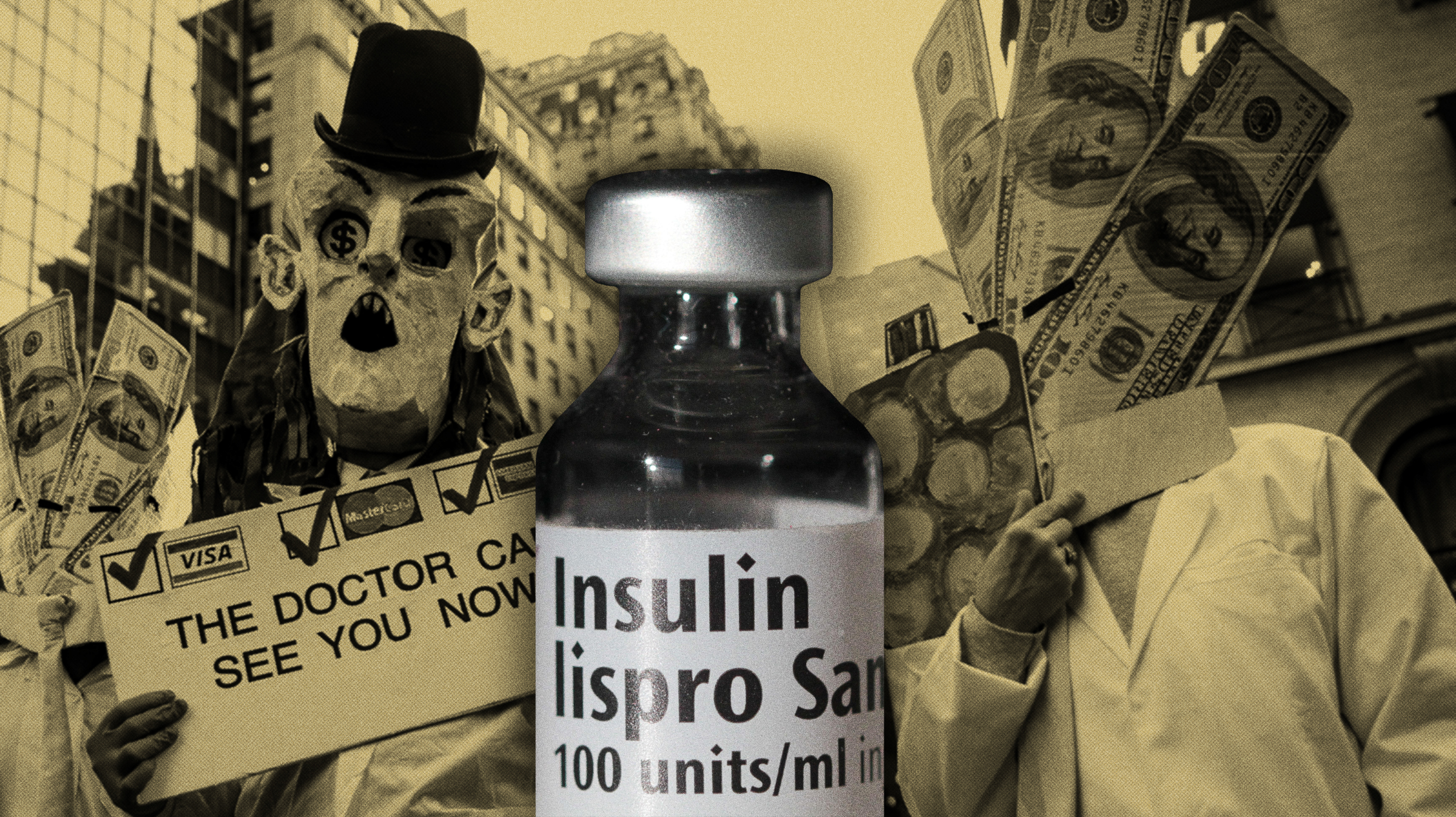America’s Insulin Crisis Shows Why We Need Socialism

Credit to Author: Victoria Gagliardo-Silver| Date: Fri, 22 Feb 2019 19:55:07 +0000
A search for the term “insulin” on GoFundMe gives you more than 6,000 results. Scrolling through, you will find countless diabetics and their loved ones asking for donations so they can afford medical supplies, insulin pumps, or even insulin itself—a hormone those who have type one diabetes (T1D), as I do, need to live. If you have insulin-dependent diabetes you cannot rely on diet to manage your condition. There is no cure. Insulin is the only way to stay alive.
Before insulin became available in the 1920s, T1D patients were put on starvation diets. Children usually died within a year, and less than 20 percent of people with diabetes survived ten years past their diagnosis. Science and medicine have improved the quality of life for diabetics immensely in the past century, allowing them to live largely normal existences, but there is a new challenge facing patients: insulin manufacturers.
Three companies—Novo Nordisk, Sanofi, and Eli Lilly—have cornered the insulin market, and the price of the drug has shot up in recent years; a lawsuit accusing the companies of keeping prices artificially high is still being fought after being filed in 2017. The cost of manufacturing a year’s worth of insulin for a single diabetic ranges between $48 and $133, according to a 2018 study. Comparatively, a vial of fast-acting insulin retails around $340 without insurance, and can only be used for 30 days after being opened.
Diabetics have had no choice but to shell out more and more money to stay alive, with insulin prices growing exponentially in the last three decades. The cost of insulin has doubled since 2012 and tripled from 2002 to 2013. This means diabetics all know instinctively a basic fact of life in America: Your life depends on making an arbitrarily set amount of money. Fall into poverty, and you could easily die.
Those who can’t afford insulin are forced to dangerously ration their supplies, as one teenager recently did because he was worried about his parent’s reduced income. Rationing insulin, or “running yourself high,” is an all-too-common way to save money or delay picking up the next prescription. One in four people with T1D have rationed insulin in America. I am part of that 25 percent. The worst-case scenario is death: In one widely covered case, Shane Patrick Boyle, a type one diabetic, died because a GoFundMe effort to pay for his insulin came up $50 short. He had been rationing his insulin, and died of diabetic ketoacidosis, a complication that occurs when diabetics do not have enough insulin in their bodies. From first-hand experience, I know this it is painful and unpleasant. When left untreated, DKA is nearly always fatal.
Boyle isn’t the only victim who has fallen through the cracks of the US healthcare system. There’s also Alec Raeshawn Smith, who aged out of his parents’ health insurance coverage and lost his life rationing insulin because he could not afford his prescription. Smith made $35,000 a year, which was too much to qualify for Medicaid or other subsidies in Minnesota, but not enough to pay for the cost of his insulin. He was three days away from his paycheck when he died.
In one of the wealthiest nations in the world, it is a massive and shameful societal problem when people are dying from lack of access to insulin. There’s no moral justification for insulin—or any life-sustaining medication—to be kept from anyone on the basis of money alone.
But our healthcare system is ableist and exclusionary in ways that go far beyond insulin. Across America, hospitals, insurance companies, and drug manufacturers punish the poverty-stricken ill and disabled with the shackles of inflated medical bills, unaffordable co-pays, and lifelong debts. The grotesquely ballooning cost of healthcare can be seen everywhere from the rising price of Mylan’s EpiPen, which saves the lives of those experiencing anaphylactic shock, to the shockingly high price of birthing a child or visiting the emergency room.
Medicare for all, under the bill put forward by Bernie Sanders and endorsed by many Democratic presidential candidates, would create a universal, government-run health plan that includes vision and dental. It would be one of the most generous government healthcare programs in the world, but even it would still not ensure that everyone had access to high-quality care—it leaves open the door for people having to pay fees for long-term care and up to $200 per year for prescription drugs. Medicare for All is a great start, and its backers say that it would also reduce the cost of drugs, but it’s only that—a start.
The goal of healthcare reform should be to ensure that as few people as possible die because they lack access to medicine. Achieving this requires a massive systemic change to decouple drugs like insulin—along with other services—from one’s ability to pay. This means either healthcare is paid for by the government or everything is based upon a sliding scale relative to income. The details of such a scheme would be complicated, but the animating force behind it is simple: Healthcare is a human right, which means insulin is a human right, which means those thousands of people begging for money so they can buy insulin—or drugs for any other chronic condition—is a humanitarian crisis. It’s as simple as that.
Sign up for our newsletter to get the best of VICE delivered to your inbox daily.
Victoria Gagliardo-Silver is a Manhattan based writer and student. Follow her on Twitter.
This article originally appeared on VICE US.